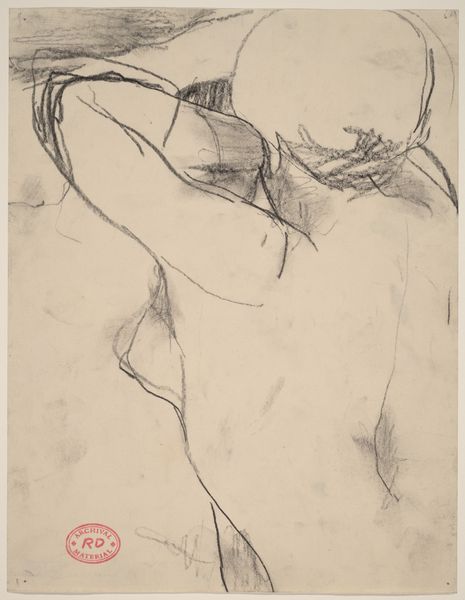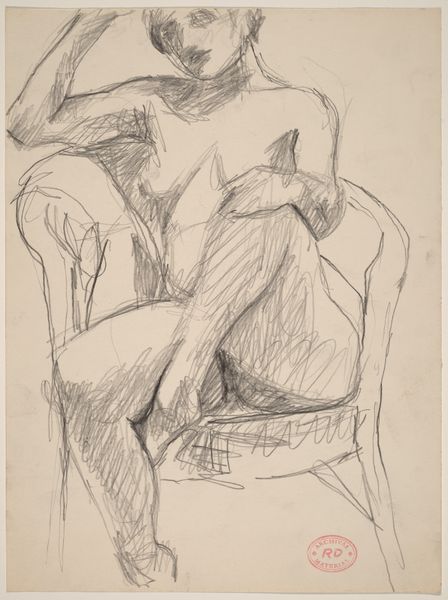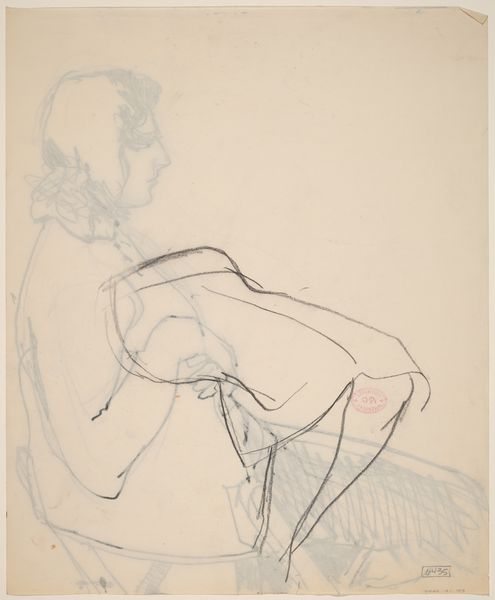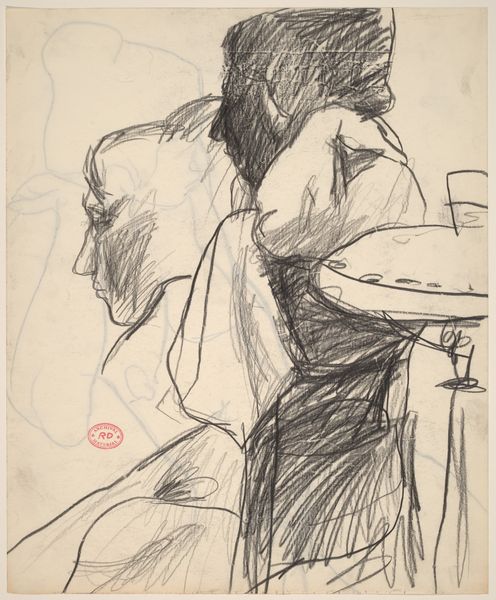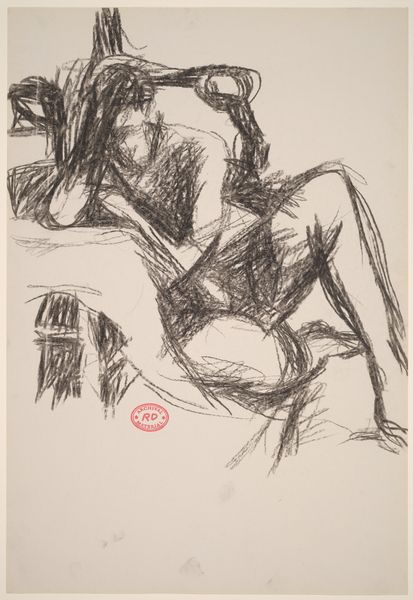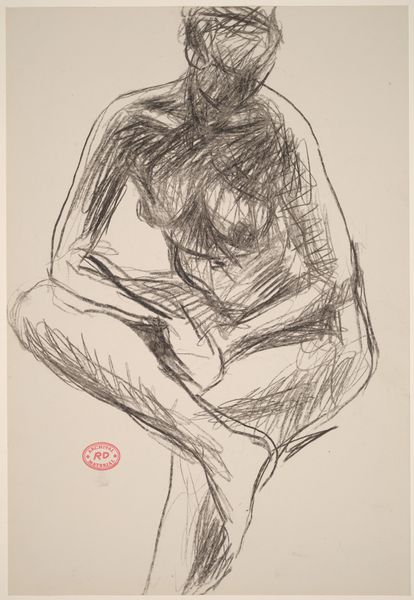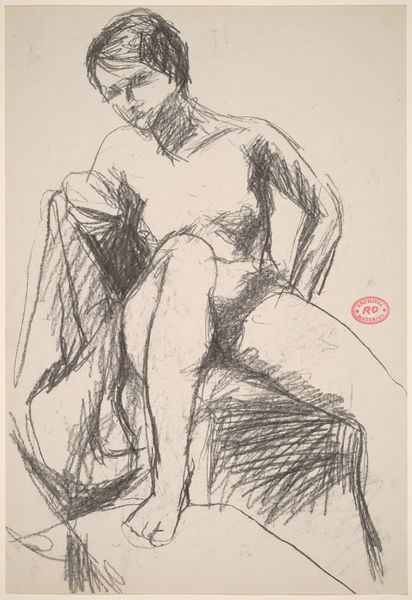![Untitled [seated woman with raised knee] by Richard Diebenkorn](/_next/image?url=https%3A%2F%2Fd2w8kbdekdi1gv.cloudfront.net%2FeyJidWNrZXQiOiAiYXJ0ZXJhLWltYWdlcy1idWNrZXQiLCAia2V5IjogImFydHdvcmtzL2Q0ZWQ5YWM5LTBlYmUtNDUxYS05MDBmLTk0ZGM1MzdmNmQ4ZC9kNGVkOWFjOS0wZWJlLTQ1MWEtOTAwZi05NGRjNTM3ZjZkOGRfZnVsbC5qcGciLCAiZWRpdHMiOiB7InJlc2l6ZSI6IHsid2lkdGgiOiAxOTIwLCAiaGVpZ2h0IjogMTkyMCwgImZpdCI6ICJpbnNpZGUifX19&w=3840&q=75)
drawing
#
drawing
#
light pencil work
#
ink drawing
#
pen sketch
#
pencil sketch
#
incomplete sketchy
#
personal sketchbook
#
bay-area-figurative-movement
#
ink drawing experimentation
#
pen-ink sketch
#
arch
#
sketchbook drawing
#
sketchbook art
Dimensions: overall: 43.4 x 29 cm (17 1/16 x 11 7/16 in.)
Copyright: National Gallery of Art: CC0 1.0
Curator: Here we have Richard Diebenkorn's "Untitled [seated woman with raised knee]," likely created sometime between 1955 and 1967. It’s a seemingly simple drawing, just pencil on paper. Editor: It feels raw, almost unfinished, doesn’t it? You can practically see the artist’s hand moving across the page, testing out different angles and lines. It reminds me of seeing the skeleton of a building, all the structure laid bare. Curator: That rawness is characteristic of much of Diebenkorn's work from that period. There was a return to figurative drawing mixed with his famous abstraction. We must consider Diebenkorn’s role in the Bay Area Figurative Movement in relation to Abstract Expressionism, really questioning its prevailing influence. Editor: I’m curious about the woman’s posture. It's casual, but also strangely self-contained. Look at how Diebenkorn uses the shading around her raised knee to emphasize its weight and volume. The process really shows the labor that is represented in this quiet moment. Curator: These seemingly casual sketches were indeed important stepping stones for his more significant paintings, particularly the Ocean Park series. They demonstrate how he used the figure as a basis for his compositional experiments, breaking down traditional approaches to image-making within established cultural contexts. Editor: Exactly! And consider the materials, just pencil and paper. They’re incredibly accessible, democratic even. The quick, almost hurried marks feel like an invitation to create, to explore the world through line and form and even mimic his labor. It pushes back against notions of artistic genius. Curator: It’s interesting you point that out. Diebenkorn's practice, viewed more broadly, challenges some of our notions about value and high art, particularly considering the post-war boom and increasing interest in avant-garde forms that would dominate much of the 1960's art market. Editor: For me, the beauty of this sketch lies in its simplicity and the insight it gives us into the artist’s process. The trace of each mark carries the energy and materiality of creation itself. Curator: And for me, understanding this drawing allows us a peek into how artistic movements respond to socio-political forces, constantly shifting away and towards accessible subjects and techniques depending on the contemporary moment. Editor: Agreed. I’ll never look at just a simple pencil sketch the same way again. Curator: And hopefully, you won’t either. Thank you.
Comments
No comments
Be the first to comment and join the conversation on the ultimate creative platform.


